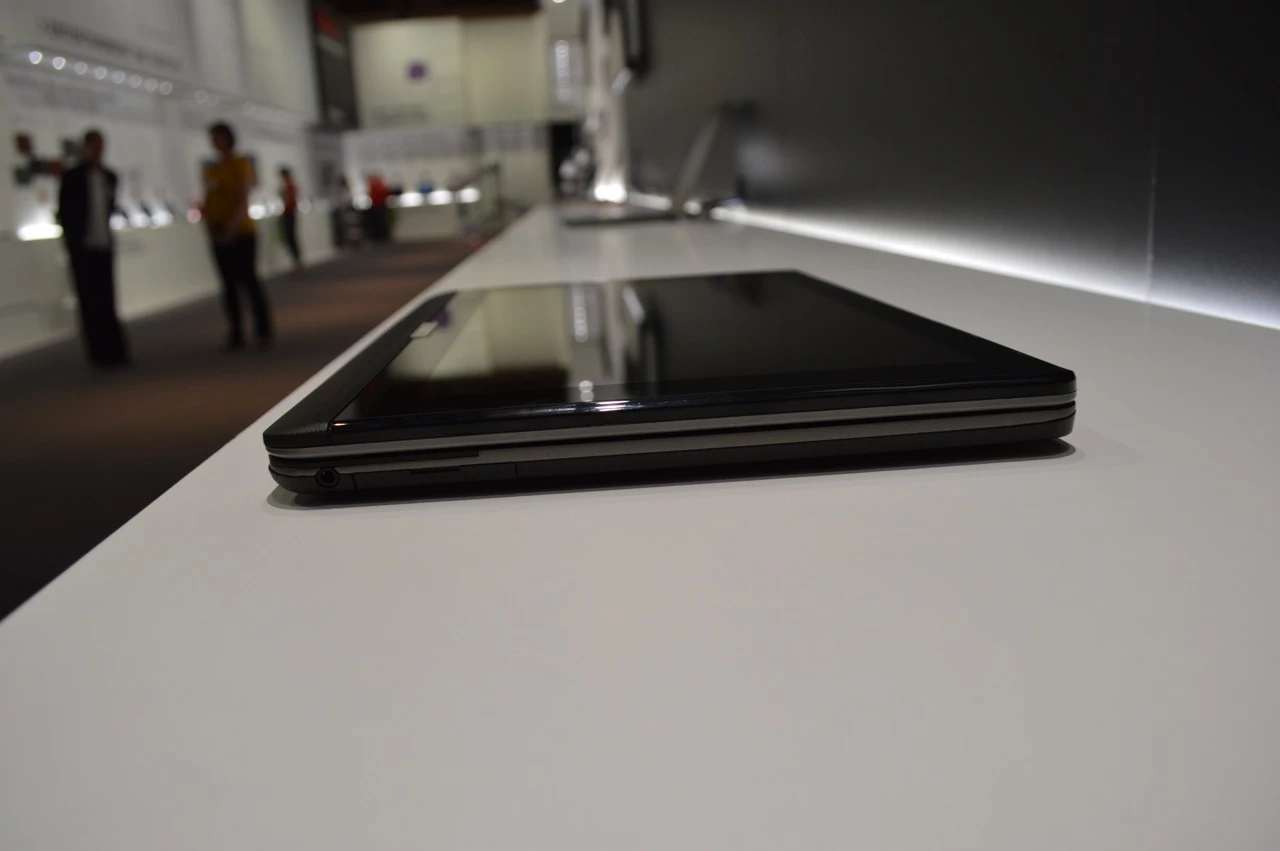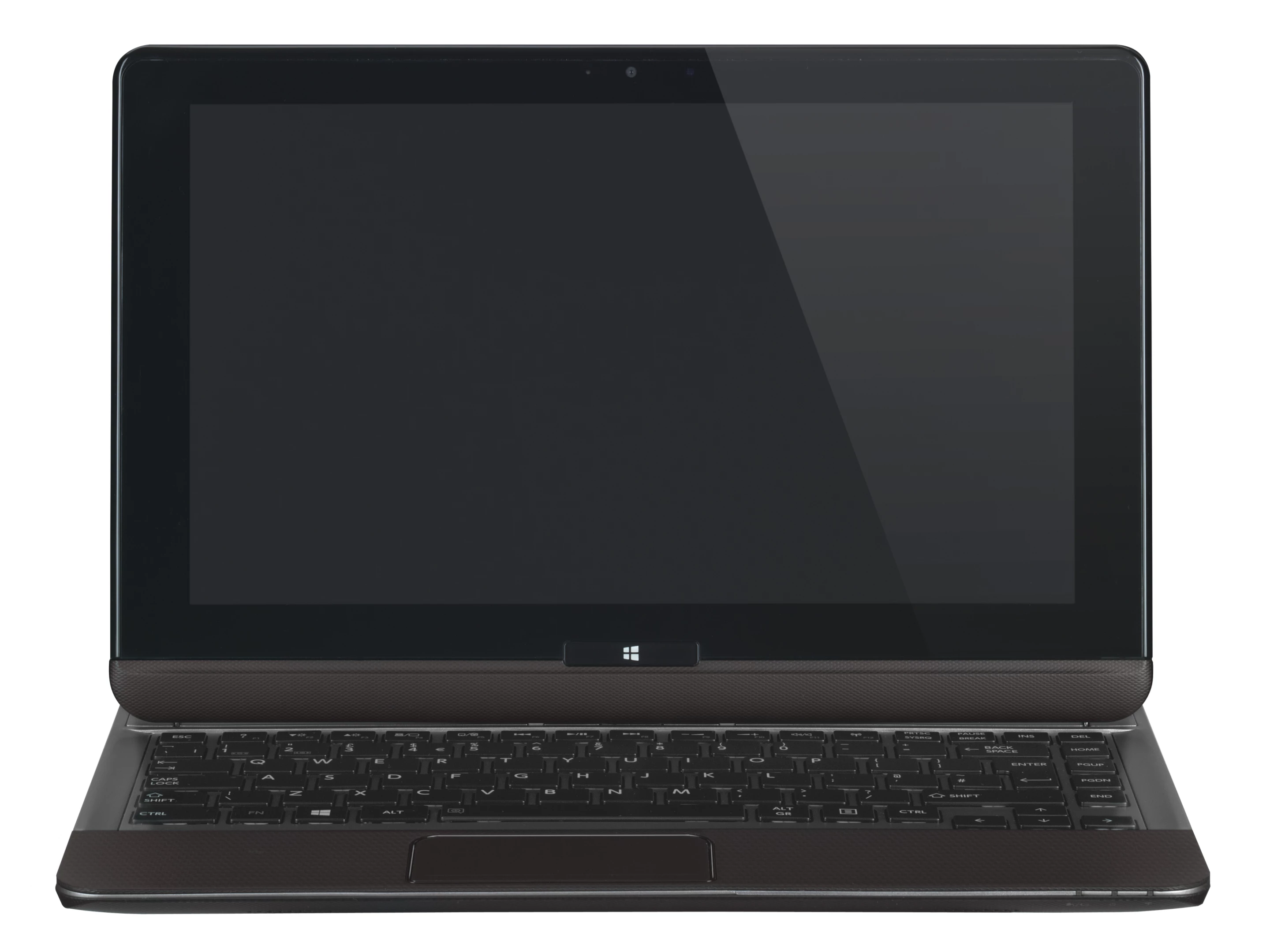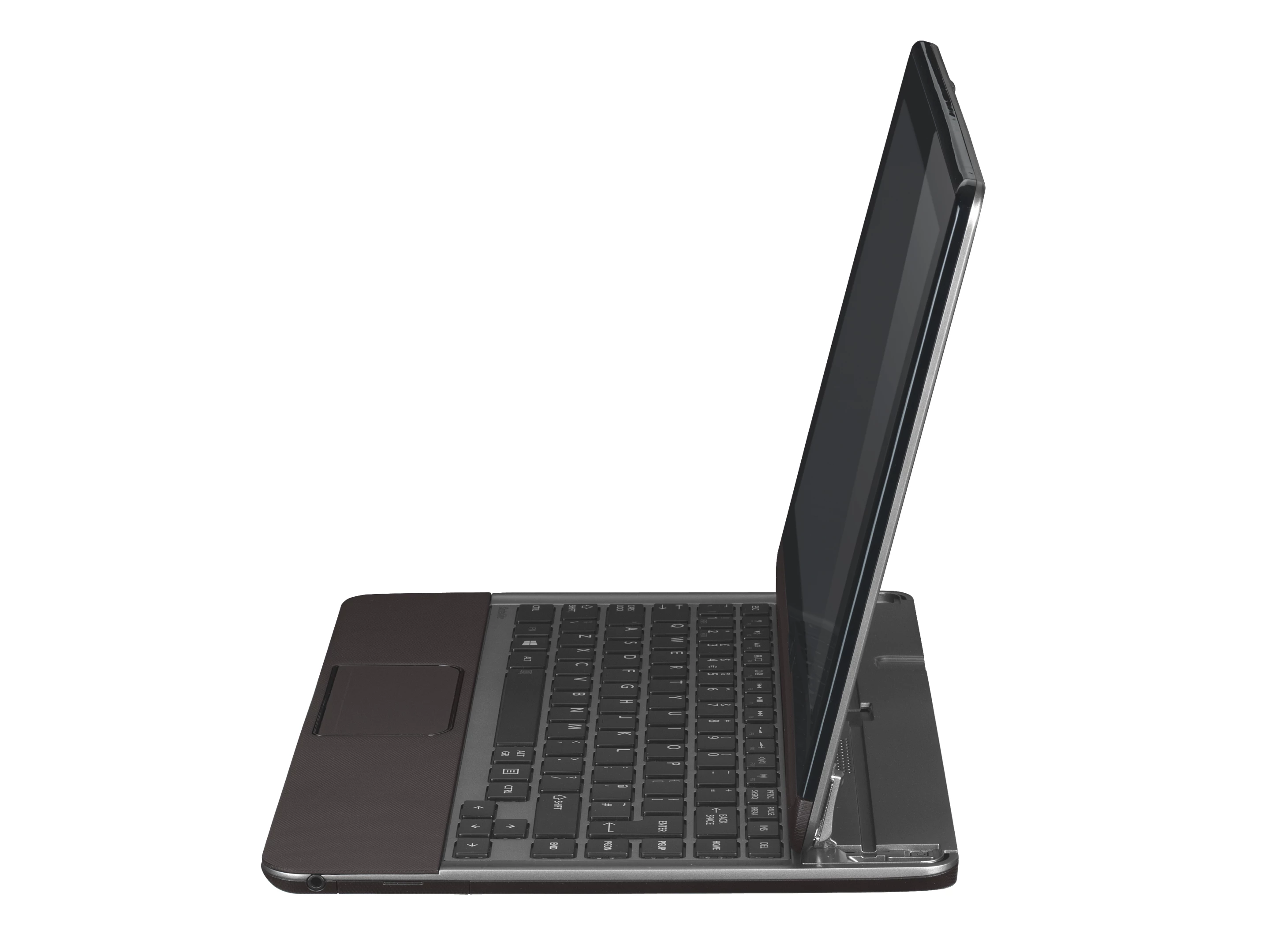Toshiba today unveiled its new hybrid laptop/tablet, the U920t, at IFA 2012. One of these (as it turns out, one that wasn't bolted to the table) found its way into the soft, delicate hands of the Gizmag team, and we decided to take it for a spin. Here are our hands on impressions.
Like other devices of its kind, the U920t is shooting for the productivity of a laptop, but the portability and usability of a laptop. As such, it has a sliding keyboard and a fully functioning touchscreen that you can slip between at will, all bound together by an i3 or i5 chipset, a quiet and quick solid state drive (with up to 256 GB of storage), up to 8 GB of DDR 3. The visuals are powered by Intel Ultrabook integrated graphics.
The build quality is strong. It feels solid in the hands, all clean and smooth industrial lines and colors, all weighing about 1.45 kg (3.3 pounds). We noticed the Windows key was a little light and plasticky, but otherwise the keyboard was sharp. The back of the machine, in particular, is classic Toshiba. The “tracks” on the back to support the switching mechanism actually add to the visual design of the thing.
Florian Mattheus, Product Marketing Manager with Toshiba’s Digital Products Division told Gizmag "we're not afraid to show the engineering.” Toshiba, of course, never has been, and unless you simply need your electronics to be at least as design-school-pretty as they are functional, that’s fine. More than fine, in fact.
The real question, though, is whether we’ll all end up wanting to carry one of these types of devices around every day. If it ends up displacing our tablets as well as our (slightly lighter) netbooks, the answer may well be yes.
Connectivity, of course, is a big deal with a device of this kind, and the U920t can connect plenty. HDMI out, two USB 3.0 ports and an SD card reader are all included, as are Bluetooth and Wi-Fi. The latter also comes with Intel’s Wireless Display software for shooting your device’s screen over the air to your TV, but you’ll only be able to make use of that if you have a compatible TV (or purchase an adapter).
This hybrid also sports the by-now-standard collection of gyros, accelerometers and sensors.
The screen, like Samsung’s ATIV Smart PCs, runs at a 1366x768 resolution on its 12.5‘’ surface. The 1- and 3-MP cameras on the front and rear of the device respectively won’t win any awards, but then who takes photos with their tablet anyway?
Toshiba also showed off its new U40 addition to the Ultrabook line. The U40 is a traditional ultrabook, so no sliding keyboard here. However, it does come with many of the usual creature comforts traditional computing brings, such as Ethernet, the option for 1 TB of regular hard disk storage (with a 32-GB SSD thrown in for good measure), and further options for dedicated Nvidia graphics and up to 16GB of RAM.
Both devices will ship with 64-bit versions of Microsoft’s Windows 8 OS.































